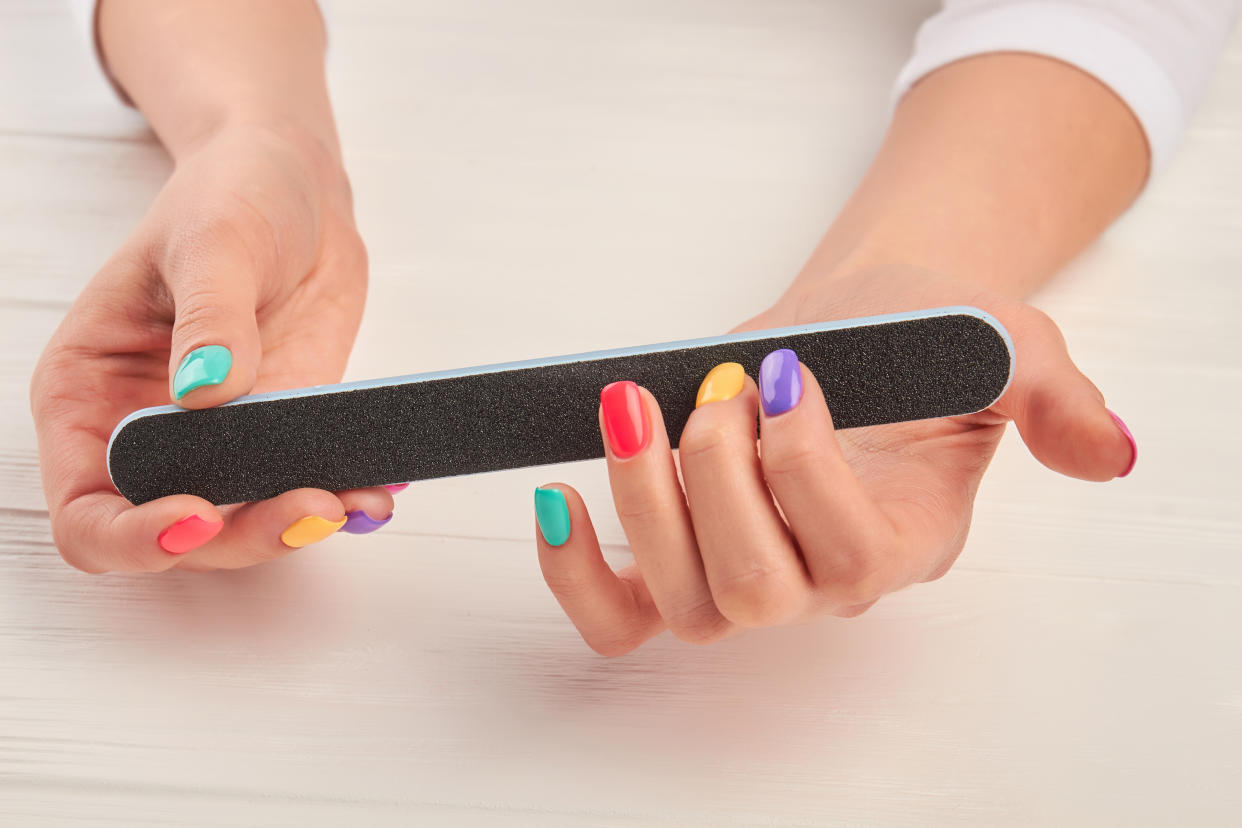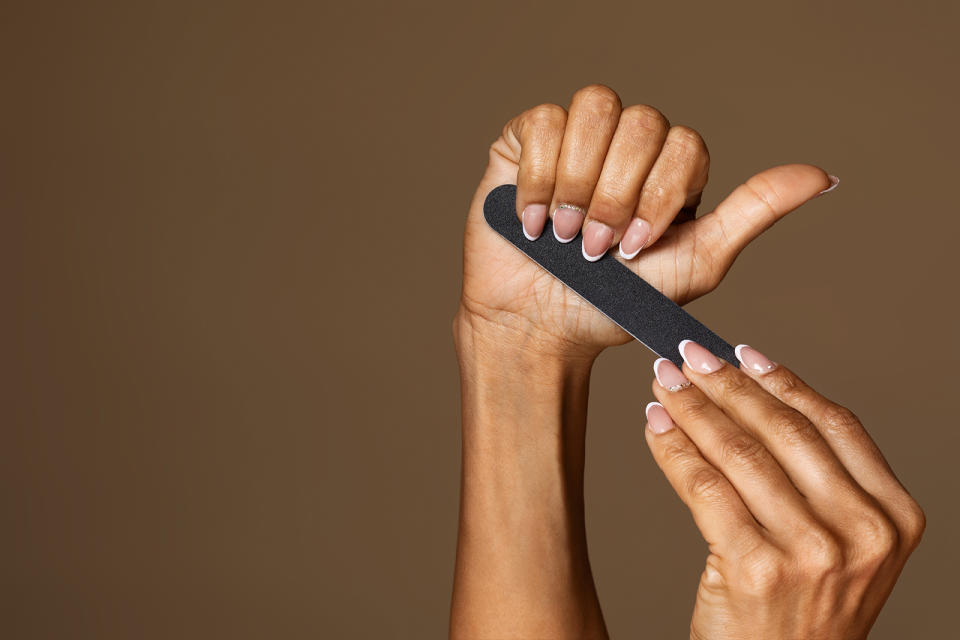Emery Boards vs. Nail Files: Which Tools Are Right for You?

I don’t come from a nail salon household. My mom and grandparents before me manicured and maintained their nails at home, and there’s nothing like the sound of an emery board nail file scraping across natural nails to make me feel nostalgic. But with so much misinformation about beauty products sailing through the internet these days, I think it’s worth putting emery boards vs. nail files to the test.
Emery Board vs. Nail File: What’s the Difference?
Nail files are to emery boards what rectangles are to squares. Every emery board is a nail file but not every nail file is an emery board.
The nail file is a category that encompasses any abrasive tool that you use to shorten and shape the nail. Meanwhile, an emery board is a specific type of cardboard/card nail file that’s coated with an abrasive-like emery that can be used to wear down and shape your nail.
Which One Came First?
This is a kind of chicken and egg situation. Knowing that nails continuously grow in just the same way today as they did hundreds of years ago, it’s not farfetched to believe there was some system of nail filing created in antiquity or before. With little extant evidence that far back, we have to use other markers to identify which one came first.
Presumably, the nail file itself came first if we’re measuring solely based on definition. There are fewer constraints on what can be considered a nail file than what can be considered an emery board.
Using the patent system isn’t that much more accurate. Some patents are difficult to locate, some inventors never secured patents, and so on. While nail file patents are harder to locate, finding the first patented American emery board is much easier.
In 1884, J. Parker Pray received a patent for the “Pocket-Diamond Emery-Board.” According to Pray, “the configuration of the design consists of a thin narrow strip of any suitable material having a roughened surface and rounded ends and parallel vertical walls on the longer sides.”
Related: Choosing Between Gel Nails & Acrylic Nails: Comparing Costs, Durability & More
When Is an Emery Board the Best Choice?

Keeping your nails filed and shaped is a major step before the painting process. It doesn't matter if you're going for a light pink summery polish; those nails need to be in tip-top shape before you take a brush to them. But before you grab the first nail file you see, consider the reasons for when an emery board is the best choice.
When You’re on a Tight Budget
Emery boards — being made out of cardboard and a layer of what's basically sandpaper —are much cheaper than most other nail files. You can grab a 12-pack of 180 grit emery boards on Amazon for under $5. Decorative crystal files like Bona Fide's Czech glass file and sharp metal files can run you a few dollars more than a disposable pack of small emery boards.
When You’ve Got Sensory Sensitivities
Maybe it’s just me but using crystal nail files gives me the heebie jeebies. Something about running it against my fingernails makes me retch. If you’re suffering from whatever tactile purgatory that is, then emery boards are your next best friend.
Overusing any nail file can lead to more chipping, breaking, and nail degradation. You should only need to file your natural nails once a week.
When You’ve Got Weak Nails
If you’re not blessed with titanium nails and deal with peeling, cracking, or splitting nails then emery boards are the nail files for you. Emery boards are less harsh on already brittle or weak nails. And if you’re trying to grow out your nails, then you know how important it is to not put undue stress on them as they elongate.
If you put on acrylic nails at home, try a dual-sided emery board with a fine and coarse grit. With these 100/180 emery boards you can file and shape acrylic nails and also maintain your natural nails when it's time to let them breathe.
When Should You Choose Other Nail Files?

While emery boards are perfect for certain situations, there are other nail files you might want to use instead.
When You’re Sustainably Minded
Being made out of cardboard might make emery boards easily disposable, but they eventually need to be trashed. They’re not nearly as sustainable as glass or metal nail files since you can buy those once and not need to replace them for years.
Related: TikTok Caught Red-Handed: Why Red Nail Theory Is a Thing
When You Have Greater Sanitation Needs
Ever noticed how your emery boards get a white cast after every use? That’s the nail dust being left behind. If you’re immune compromised or have a weak respiratory system, this might not be a safe option for you.
Metal and crystal nail files can be sanitized before and after each use with soap and water. And you can even disinfect them with alcohol if you want to feel extra safe.
When You Have Short Nails
Emery boards are flexible, but the sturdiest ones tend to be on the larger side. If you have extra short nails or can’t grow your nails very long, then an emery board might rub against the pads of your fingers when you file them.
Meanwhile, metal files are usually quite thin and able to get into tight corners without creating abrasions on the skin. For example, these metal nail files come to a sharp point and are perfect for digging underneath the nail and getting a precise shape.
Emery Board Nail Files Are a Beauty Staple
Emery boards have been around for decades. Even if you fancy tricking out your kit with an expensive crystal nail file, you’ll always find an emery board at the drugstore around the corner should you need it. Remember that whether they’re your first choice or your last choice, they’re still in the running.

